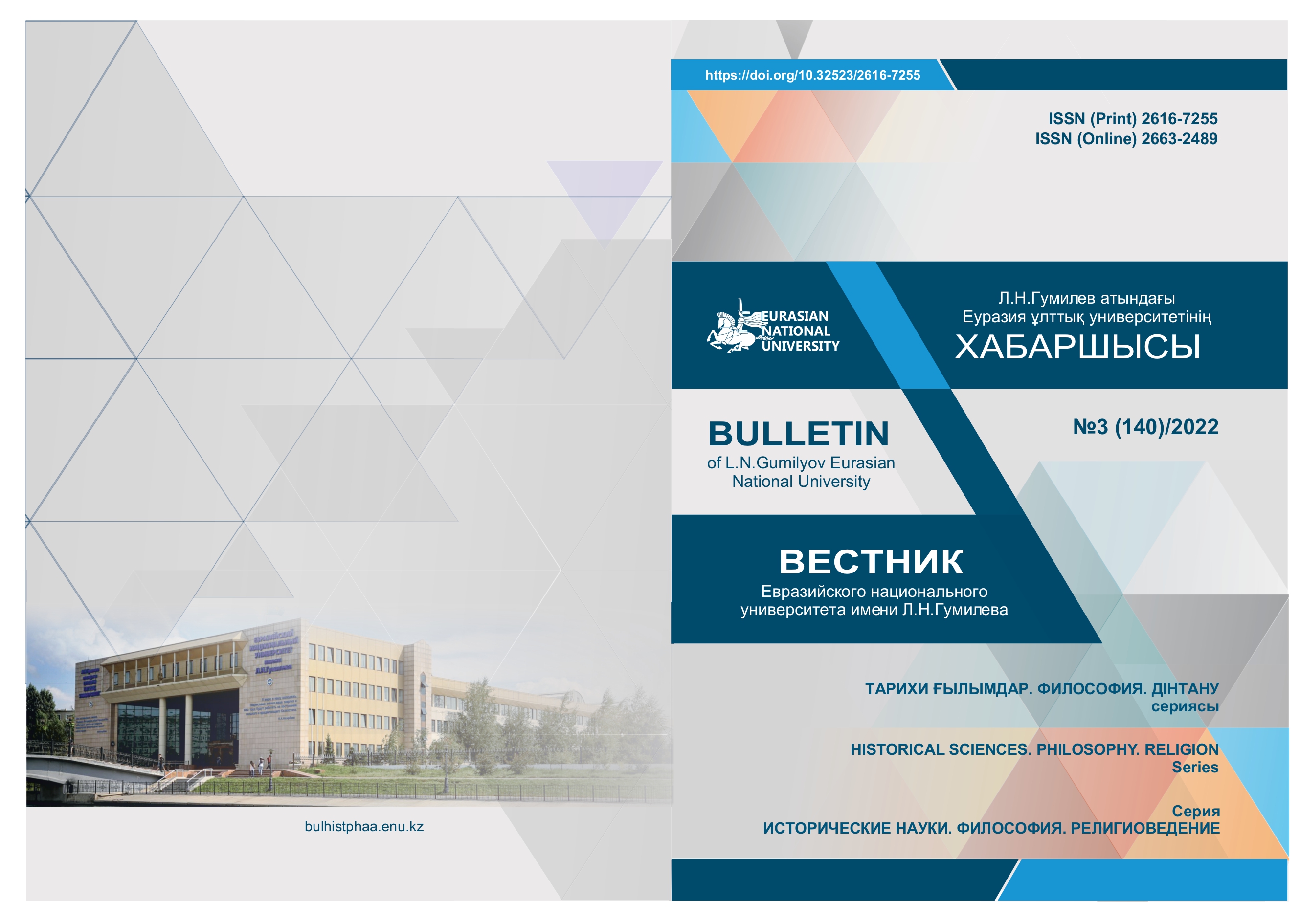Formation and features of the Golden Horde traditional historiography
Views: 239 / PDF downloads: 646
DOI:
https://doi.org/10.32523/2616-7255-2022-140-3-74-88Keywords:
Golden Horde; historical consciousness; traditional historiography; oral history; folklore; written sourcesAbstract
The article examines the historical thought and tradition of oral history of the Golden Horde period, as well as traditional historiography. It analyzes the relationship, and features of the Steppe oral history and the traditions of written history, and considers the nature, specifics of formation, and continuity of the historiography of the Golden Horde (traditions of narration, writing history). The peculiarity of the formation of the Golden Horde historical tradition is determined by the study of nature and relations between the oral historical narrative tradition and the written culture in the Steppe. The history-telling and writing tradition developed in the Golden Horde state is distinguished as a synthesis of oral and written historical traditions. The works by Utemish Khadzhi and Abulgazi Bahadur Khan can be regarded as a real embodiment of the oral historical tradition, which was formed and developed in the era of the Golden Horde. The traditional historiography of the Golden Horde is also characterized by works of written culture along with samples of oral history or folklore. It is obvious that the written historical tradition of the traditional historiography of the Golden Horde was in accordance with the Turkic-Muslim written tradition that was widespread at that time but was formed mainly under the influence of the oral history tradition. It should be concluded that the specificity of the Golden Horde historiographical tradition is determined by the inclusion in the historiography of the history of individual clans, the biographies of local saints, and famous characters, which are narrated in legends. Over time, this tradition entered the Muslim picture of the world and historiography. The spread of this tradition and penetration into the consciousness of the Turkic people was facilitated by its proximity to the systems of folklore and epic genres. Features of historical reality, characteristic of the Eastern Desht-i-Kipchak of the 13th-15th centuries, are most clearly manifested in the traditional oral historiography of the Golden Horde in comparison with classical written sources. In the works of representatives of traditional historiography, along with the external content of historical reality, its internal meaning is also reflected.
Downloads

Downloads
Published
How to Cite
Issue
Section
License
Copyright (c) 2022 M.S. Nogaibayeva

This work is licensed under a Creative Commons Attribution-NonCommercial 4.0 International License.







